Who Were the Ninja? What is the Philosophy of Ninjitsu? How Did They Differ from the Samurai? What Does Modern Anime Say About This?
 忍者 The Ninja, Patient Warriors
忍者 The Ninja, Patient Warriors
Ninja, mysterious figures from the depths of Japanese history, have long intrigued both historians and pop culture enthusiasts. Their presence in Japan's history is as fascinating as it is enigmatic, and their influence on contemporary culture is undeniable. Often portrayed as masters of espionage, sabotage, and combat, ninjas have shaped the image of the enigmatic warrior for centuries, captivating people around the world. However, the role of ninja in Japanese history and culture goes far beyond stereotypes and popular perceptions, offering a rich mosaic of historical realities, myths, and cultural transformations.
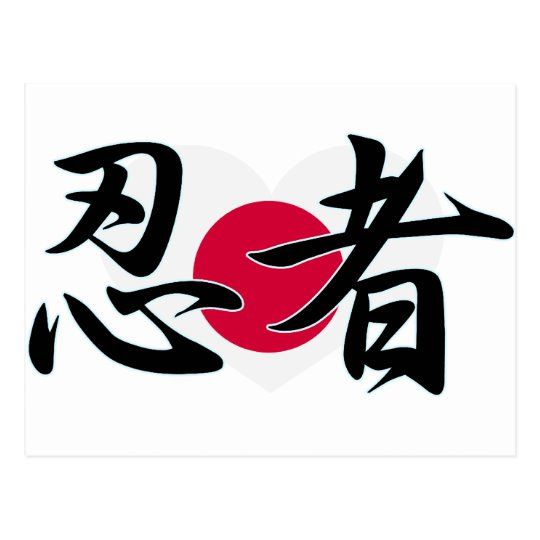
With their rich history and cultural complexity, ninjas are a fascinating subject of study. This article will review the history and philosophy of the ninja, compare them to the samurai, and examine how they are portrayed in contemporary Japanese anime. This journey will not only provide a better understanding of the true nature of the ninja but also show how the past is interpreted and transformed in various forms of contemporary culture.
 The Emergence of the Ninja School
The Emergence of the Ninja School
The Genesis of Ninja in the Heian Period
The emergence of the ninja, known in Japan as shinobi, can be dated back to the Heian period (794-1185 AD), when rising political and military tensions led to a demand for specialists in espionage and irregular tactics. During this period, the central authority of the emperor began to weaken, and local feudal lords, known as daimyō, started to gain power. In such conditions, the first groups of ninja began to form, mainly recruiting from the lower social strata, who were not directly associated with the samurai code. These groups initially focused on espionage and informational activities. Accounts of actions similar to those later associated with ninja can be found in such records as "Konjaku Monogatari," a collection of Japanese anecdotes and stories from this period.
 Development and Specialization in the Kamakura and Muromachi Periods
Development and Specialization in the Kamakura and Muromachi Periods
During the Kamakura (1185-1333) and Muromachi (1336-1573) periods, the role of the ninja became more distinct and specialized. The increase in local conflicts and internal wars between various factions of samurais created ideal conditions for the development of ninja techniques. Regions such as Iga and Kōga, known for their inaccessible terrain, became centers for ninja training and recruitment. The inhabitants of these areas, often excluded from mainstream feudal society, became adepts of martial arts, camouflage, ambush tactics, and information gathering. Unlike the samurais, who operated openly and according to a defined code of honor, ninjas developed skills that allowed them to operate effectively in the shadows, which was key in the chaotic world of politics and wars in feudal Japan.
The Origins of the Ninja
The origins of the ninja trace back to the Heian period (794-1185 AD) in Japan. It was a time when central authority was weak, and local feudal lords (daimyō) competed for power. In this context, the need for spies and agents – the forerunners of the ninja – emerged. There are accounts from this period, such as the courtly memoirs "Konjaku Monogatari," which describe deeds similar to the actions of the ninja.
 Development and Skills
Development and Skills
During the Kamakura (1185-1333) and later Muromachi (1336-1573) periods, ninja skills were further developed, primarily in provinces such as Iga and Kōga, which were known as major training centers for ninja. Ninjas trained in martial arts, tactics, camouflage, medicine, and various espionage techniques. However, their main role was information gathering, not direct attack.
The Height of Power and Significance
The Sengoku period (1467-1603), an era of civil wars in Japan, represented the golden age for the ninja. During this time, ninjas were not only spies and saboteurs but also served as military advisors. Notable figures such as Hattori Hanzō, who served Tokugawa Ieyasu, contributed to shaping the legend of the ninja.
Documentation and Legacy
The oldest surviving writings describing ninja tactics and techniques are "Bansenshukai" (1676), "Shoninki" (1681), and "Ninpō Chimon" (undated, presumably 17th century). These texts offer insights into the practices and philosophy of the ninja, although their authenticity and accuracy are subjects of discussion among historians.
 Daily Life of the Ninja
Daily Life of the Ninja
Contrary to popular imagery, most ninjas were not full-time agents. Many of them led normal lives as farmers, artisans, or merchants, using their ninja skills only when necessary. This double life was key to their effectiveness as secret agents.
Social Role of the Ninja
In the feudal hierarchy of Japan, ninjas often found themselves below the samurais, but their skills were extremely valuable in the complex political and military game of those times. Their abilities to gather information, conduct covert operations, and sabotage the enemy were invaluable, especially during periods of internal conflicts and civil wars.
Philosophy of Ninjutsu
 Ninjutsu as an Art of Survival
Ninjutsu as an Art of Survival
Ninjutsu, often regarded as "the art of patience" or "the art of endurance," is much more than just a set of combat techniques. Essentially, ninjutsu is the art of survival, adaptation, and flexibility. It encompasses a wide range of skills, from hand-to-hand combat and the use of various weapons to espionage techniques such as camouflage, message encryption, and information gathering. The philosophy of ninjutsu focuses on using intelligence, cunning, and an understanding of the environment to survive and achieve goals in the face of adversity.
Ethics and Morality in Ninjutsu
Ninjutsu differs from other Japanese martial arts in its approach to ethics and morality. While samurais were guided by the bushidō code, emphasizing honor and open confrontation, ninjas focused on effectiveness, even if it required covert or deceptive actions. This pragmatic nature of ninjutsu was often seen as contrary to the samurai ideal of honor but was crucial in effectively carrying out tasks, which often had an espionage and counter-espionage character.
 Adaptation and Variability
Adaptation and Variability
A key element of ninjutsu is adaptation to changing circumstances. Ninjas had to be ready to operate in various environments, from dense forests to populated cities. This also meant the ability to adapt to social and political realities, often involving disguising themselves and playing different roles to get close to a target or gather information.
Physical and Mental Aspects of Ninjutsu
Ninjutsu also involves the development of mental skills, such as concentration, psychological endurance, and the ability to make quick decisions. These aspects are just as important as physical skills. Meditation and other practices aimed at calming the mind were part of the training, helping ninjas maintain calmness and clarity of mind in difficult situations.
 Ninjutsu in a Contemporary Context
Ninjutsu in a Contemporary Context
Today, ninjutsu is often practiced as a form of martial art, but for many practitioners, it still retains a deeper philosophical dimension. Although the techniques and methods of ninjutsu have been adapted to modern times, the basic principles of adaptation, cunning, and resourcefulness remain key. Ninjutsu, as a philosophy, emphasizes the importance of flexibility in thinking and action, valued both in martial arts and in everyday life.
 The Philosophy of Ninjutsu: Key Elements
The Philosophy of Ninjutsu: Key Elements
Adaptation and flexibility lie at the core of ninjutsu philosophy, transcending the boundaries of physical combat techniques to become a metaphor for approaching life. Ninjas were masters at adapting to every situation, requiring deep understanding and analysis of both their physical and social environment. This philosophy emphasized the importance of being prepared for all possibilities and the ability to quickly change tactics in response to changing conditions. The ninja mentality was oriented towards survival and achieving goals with minimal risk, often favoring subtler, strategic actions over direct confrontation. This aspect of ninjutsu is reflected in the concept of "win without fighting," which requires a deep understanding of the psychology of the opponent and the environment.
 Inner Discipline and Mind Control
Inner Discipline and Mind Control
The second key aspect of the philosophy of ninjutsu is inner discipline and mind control. Ninjas placed significant emphasis on the development of mental skills, such as concentration, mental endurance, and stress management. Meditation and other mental practices were an integral part of their training, aiding in maintaining clarity of mind and calmness even in the most stressful situations. This ability to control their mind and emotions allowed them to make decisions from a place of calm and thoughtfulness, which was crucial in the hidden and often dangerous world in which the ninjas operated. In this way, ninjutsu extended beyond the physical aspects of combat, becoming a life philosophy based on controlling one's own mind and body in any situation.
Ninja in Anime
 "Naruto" – A Fantastic Representation of Ninja
"Naruto" – A Fantastic Representation of Ninja
One of the most well-known anime where ninjas play a central role is "Naruto." The characters in "Naruto" are reinterpretations of traditional ninjas, but with added fantastical elements. The main character, Naruto Uzumaki, and other ninjas in the series utilize ninjutsu techniques, which are, however, greatly diversified and fantastic, such as manipulating "chakra" energy. Although "Naruto" incorporates many elements of ninja culture, such as hierarchy, techniques, and skills, it does so in a distinctly magical way.
"Basilisk" – A Blend of History and Fantasy
The anime "Basilisk," based on the novel "The Kouga Ninja Scrolls," depicts two rival ninja clans, Kōga and Iga, in the Sengoku era. It presents ninjas as equipped with almost supernatural abilities, yet maintains some historical references, such as the portrayal of the rivalry between these clans. It also shows traditional ninjutsu techniques, albeit in a highly exaggerated form.
 "Ninja Scroll" – Ninja in the Art of Animation
"Ninja Scroll" – Ninja in the Art of Animation
The film "Ninja Scroll" is a classic anime that depicts ninjas in the context of Edo-period Japan. The main character, Jubei Kibagami, is a wandering ninja warrior with many classic ninja traits, including combat skills and stealth. The film combines historical elements with fantasy, portraying ninjas as almost mythical figures.
"Samurai Champloo" – Ninja in the World of Samurai
Although "Samurai Champloo" primarily focuses on samurais, it also features ninja characters, showcasing the differences between these two groups of warriors. In the anime, they are portrayed as more cunning and using hidden techniques, as opposed to the more direct and honorable samurais, reflecting the historical differences between these two classes.
 "Ninja Hattori-kun" – Ninja in Children's Anime
"Ninja Hattori-kun" – Ninja in Children's Anime
"Ninja Hattori-kun" is a series aimed at a younger audience, presenting ninjas in a more humorous and light-hearted manner. The main character, Hattori, is a friendly ninja who helps a young boy with everyday problems. Although it is a more comedic approach, it shows ninjas as characters capable of adapting to the modern world.
"Boruto: Naruto Next Generations" – Continuing the Ninja Legacy
"Boruto: Naruto Next Generations," the continuation of the "Naruto" series, still explores the world of ninjas, but from a new perspective. It introduces new technologies and shows how ninja culture adapts to the changing world. In this way, the series demonstrates how traditional ninjutsu can be reinterpreted and adjusted to new circumstances, linking back to the philosophical aspects of ninjutsu concerning adaptation and flexibility.
Myth vs Reality: How Anime Shapes the Image of Ninja
 Fantasy in Anime
Fantasy in Anime
Contemporary anime often portrays ninjas as almost superhuman characters, endowed with incredible abilities and magical powers. Popular series like "Naruto" and "Ninja Scroll" introduce fantastical elements that greatly diverge from historical reality. In reality, although ninjas indeed possessed a range of skills related to espionage, tactics, and combat, they were primarily masters of camouflage and information gathering, not supernatural warrior-heroes, as often depicted in anime.
 Historical Reality of Ninja
Historical Reality of Ninja
Historical ninjas were agents who specialized in espionage, reconnaissance, and sometimes sabotage. Their main task was to gather information, not direct combat. Although they were capable of fighting, they rarely had the opportunity for open confrontation, and their skills and techniques were more focused on stealth and avoiding detection. Contrary to depictions in anime, they did not wear characteristic black outfits that could easily unmask them; instead, they preferred clothing that allowed them to blend in with the crowd.
The Impact of Anime on the Image of Ninja
Anime has had a tremendous impact on the contemporary perception of ninjas worldwide. Thanks to the popularity of series like "Naruto," ninjas have become a global symbol of Japanese culture, but often in a way that significantly deviates from their historical roots. Although anime often highlights elements such as honor, loyalty, and combat skills – which are related to reality – the way these elements are presented is usually greatly exaggerated and fantastical.
Realistic Depiction of Ninja in Media
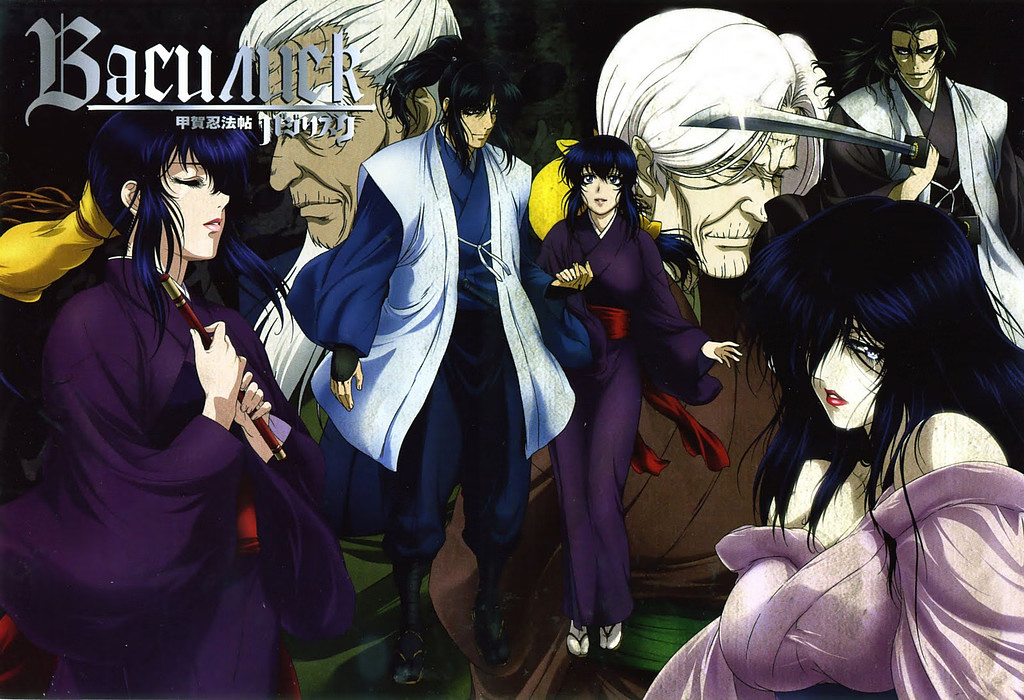
While anime and films that more or less realistically depict samurais can be found, such productions about ninjas are much harder to come by. One anime that portrays ninjas in a relatively realistic manner is "Basilisk" (based on Futaro Yamada's novel "The Kouga Ninja Scrolls"). Although it contains fantastical elements, "Basilisk" reflects certain aspects of historical ninjas, such as their skills in espionage, the use of camouflage and manipulation tactics, and depicts conflicts and rivalries between ninja clans, which have their roots in Japanese history.
Path of the Assassin
The manga "Path of the Assassin" (Japanese: "Hanzō no Mon"), created by Kazuo Koike and Goseki Kojima, also tries to portray ninjas more or less realistically. It is a story about Hattori Hanzō, one of the most famous figures in ninja history. Although the manga contains some realistic elements, it is largely a fictional and dramatized representation of history.
 Shinobi no Mono
Shinobi no Mono
One film often considered to be a relatively realistic depiction of ninjas in a historical context is the Japanese film "Shinobi no Mono" (also known as "Band of Assassins"). The "Shinobi no Mono" film series, which started in 1962, tells the story of the real ninja, Goemon Ishikawa, and is recognized as one of the more authentic portrayals of ninja life and activity in feudal Japan.
Shinobi: Heart Under Blade
Still relatively realistic (compared to other productions, as it is hard to speak of historical accuracy) in depicting ninjas, is the 2005 film "Shinobi: Heart Under Blade." Although this film contains some fantastical elements, it is based on the novel "The Kouga Ninja Scrolls" and presents many aspects of ninja life and culture. The film tells the story of two rival ninja clans, Iga and Kōga, which have their roots in historical conflicts, albeit in a heavily dramatized and beautified version.
 Kamui Gaiden
Kamui Gaiden
One of the newer films that tries to depict ninjas in a more realistic and less embellished manner is the 2009 Japanese film "Kamui Gaiden." It is an adaptation of a popular manga, but the film focuses on more realistic aspects of ninja life, avoiding the excessive fantastical exaggeration often associated with ninja representations in popular culture. "Kamui Gaiden" presents a fairly authentic backdrop and costumes that reflect the Edo period in Japan, giving insight into the culture and life of that era.
Kagemusha
Finally, a classic - "Kagemusha," directed by Akira Kurosawa and released in 1980, is an outstanding example of a film that, although not directly focusing on ninjas, portrays the Sengoku era in Japan in a way that is marked by a realistic approach and historical depth. The film centers on the theme of "kagemusha" (shadow warrior), the double of the feudal lord (daimyō) Takeda Shingen. "Kagemusha" is based on real characters and events from Japanese history. The film depicts the political and military complexities of the Sengoku period, showing conflicts between various samurai clans.
 Discovering Ninjas: Beyond Anime Screens
Discovering Ninjas: Beyond Anime Screens
Immersing oneself in the history and culture of ninjas reveals that these characters are more than just mysterious figures in black outfits, often encountered in Japanese anime. Ninjas were real people who operated in the complex social and political landscape of feudal Japan, giving them a multi-dimensionality often overlooked in the media. This deep awareness of history allows for a more nuanced view of their representations in anime.
When viewers watch anime featuring ninja characters, having knowledge of their authentic heritage, they can experience each episode from a new perspective. This knowledge enriches the viewing experience, allowing for the appreciation of both the historical roots of the characters and the creativity of anime creators. Such awareness ensures that ninjas portrayed in anime are no longer just fictional characters, but become a bridge connecting viewers to the rich and complex history that shaped these fascinating figures.
It is equally important to have an awareness and understanding of the real context and realities in which ninjas lived and operated. This deep understanding of history and culture allows for more conscious reception and interpretation of messages contained in anime. Knowledge of the actual living conditions of ninjas, their social roles, and techniques enables the distinction between fiction and historical facts and appreciates how anime creators adapt and reinterpret these elements, creating something new and unique. This ability to distinguish reality from fiction not only enriches the viewing experience but also allows for a fuller understanding and appreciation of both the historical and contemporary aspects of Japanese culture.
"The ultimate goal of a ninja is to have his heart become like the sky, earth, wind, water, and fire, invisible and elusive." - Fujibayashi Yasutake, "Bansenshukai", 1676
"Strong Japanese Women"
see book by the author
of the page
未開 ソビエライ
An enthusiast of Asian culture with a deep appreciation for the diverse philosophies of the world. By education, a psychologist and philologist specializing in Korean studies. At heart, a programmer (primarily for Android) and a passionate technology enthusiast, as well as a practitioner of Zen and mono no aware. In moments of tranquility, adheres to a disciplined lifestyle, firmly believing that perseverance, continuous personal growth, and dedication to one's passions are the wisest paths in life. Author of the book "Strong Women of Japan" (>>see more)
Personal motto:
"The most powerful force in the universe is compound interest." - Albert Einstein (probably)
Mike Soray
(aka Michał Sobieraj)
未開 ソビエライ
An enthusiast of Asian culture with a deep appreciation for the diverse philosophies of the world. By education, a psychologist and philologist specializing in Korean studies. At heart, a programmer (primarily for Android) and a passionate technology enthusiast, as well as a practitioner of Zen and mono no aware. In moments of tranquility, adheres to a disciplined lifestyle, firmly believing that perseverance, continuous personal growth, and dedication to one's passions are the wisest paths in life. Author of the book "Strong Women of Japan" (>>see more)
Personal motto:
"The most powerful force in the universe is compound interest." - Albert Einstein (probably)
Mike Soray
(aka Michał Sobieraj)
Write us...
Ciechanów, Polska
dr.imyon@gmail.com
___________________
inari.smart
Would you like to share your thoughts or feedback about our website or app? Leave us a message, and we’ll get back to you quickly. We value your perspective!
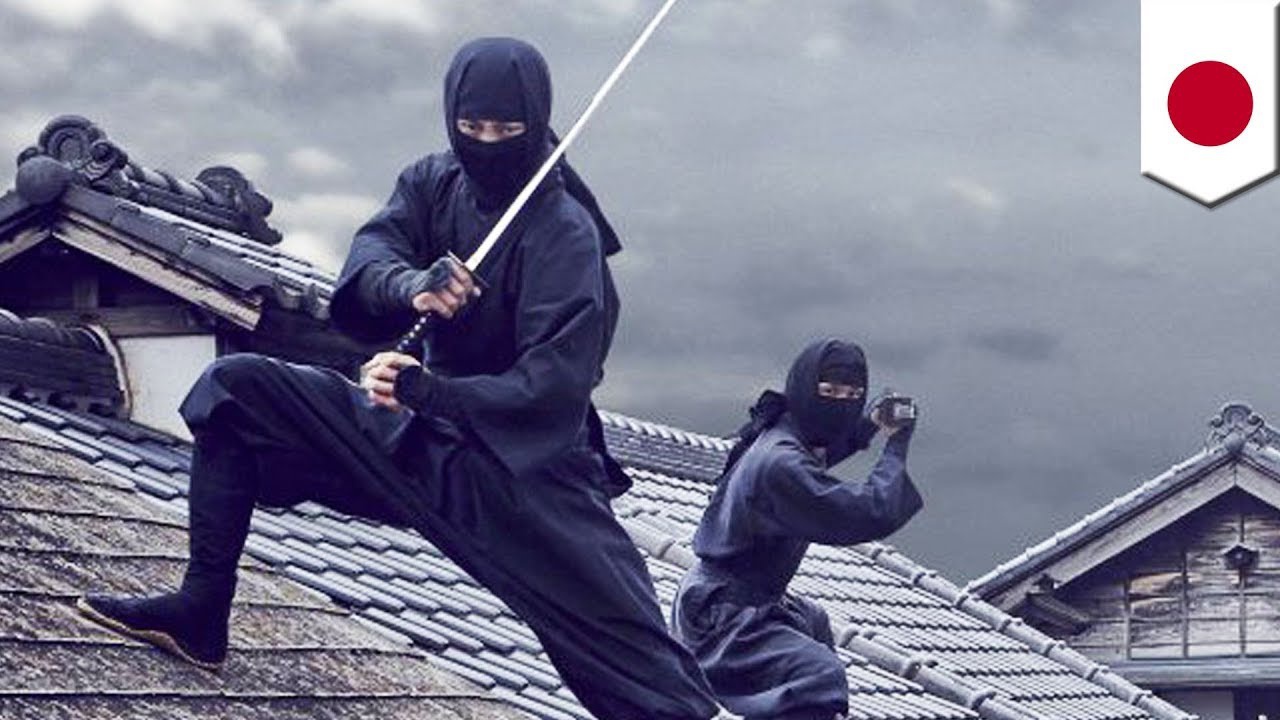 忍者 The Ninja, Patient Warriors
忍者 The Ninja, Patient Warriors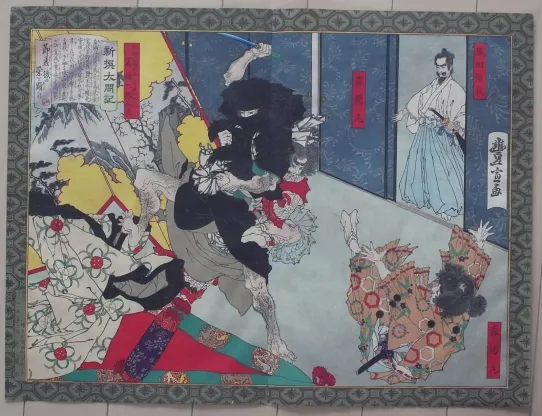 The Emergence of the Ninja School
The Emergence of the Ninja School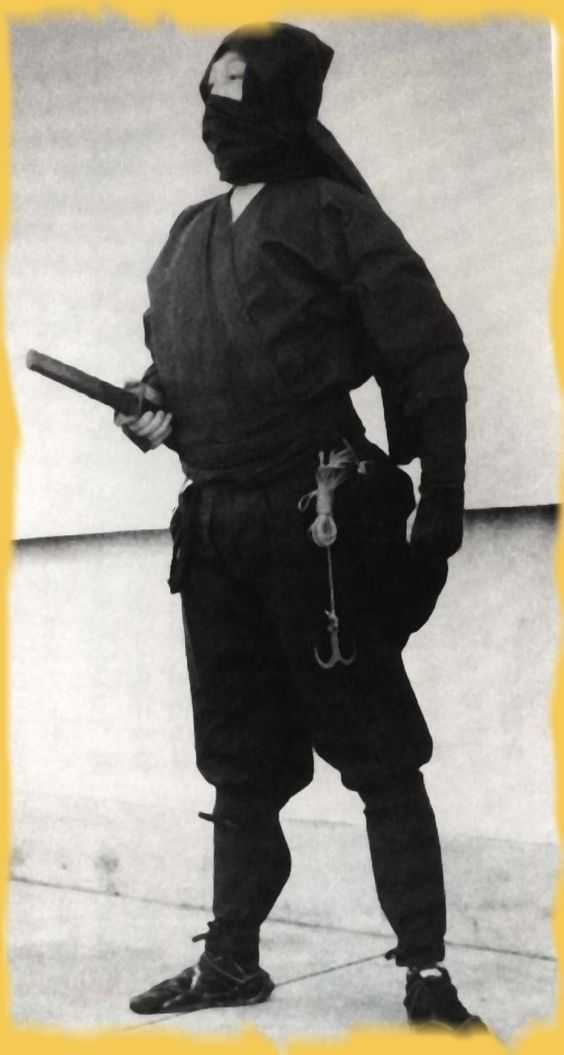 Development and Specialization in the Kamakura and Muromachi Periods
Development and Specialization in the Kamakura and Muromachi Periods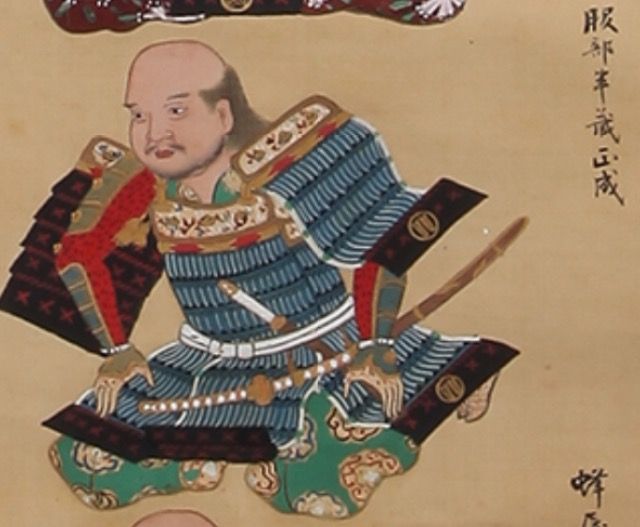 Development and Skills
Development and Skills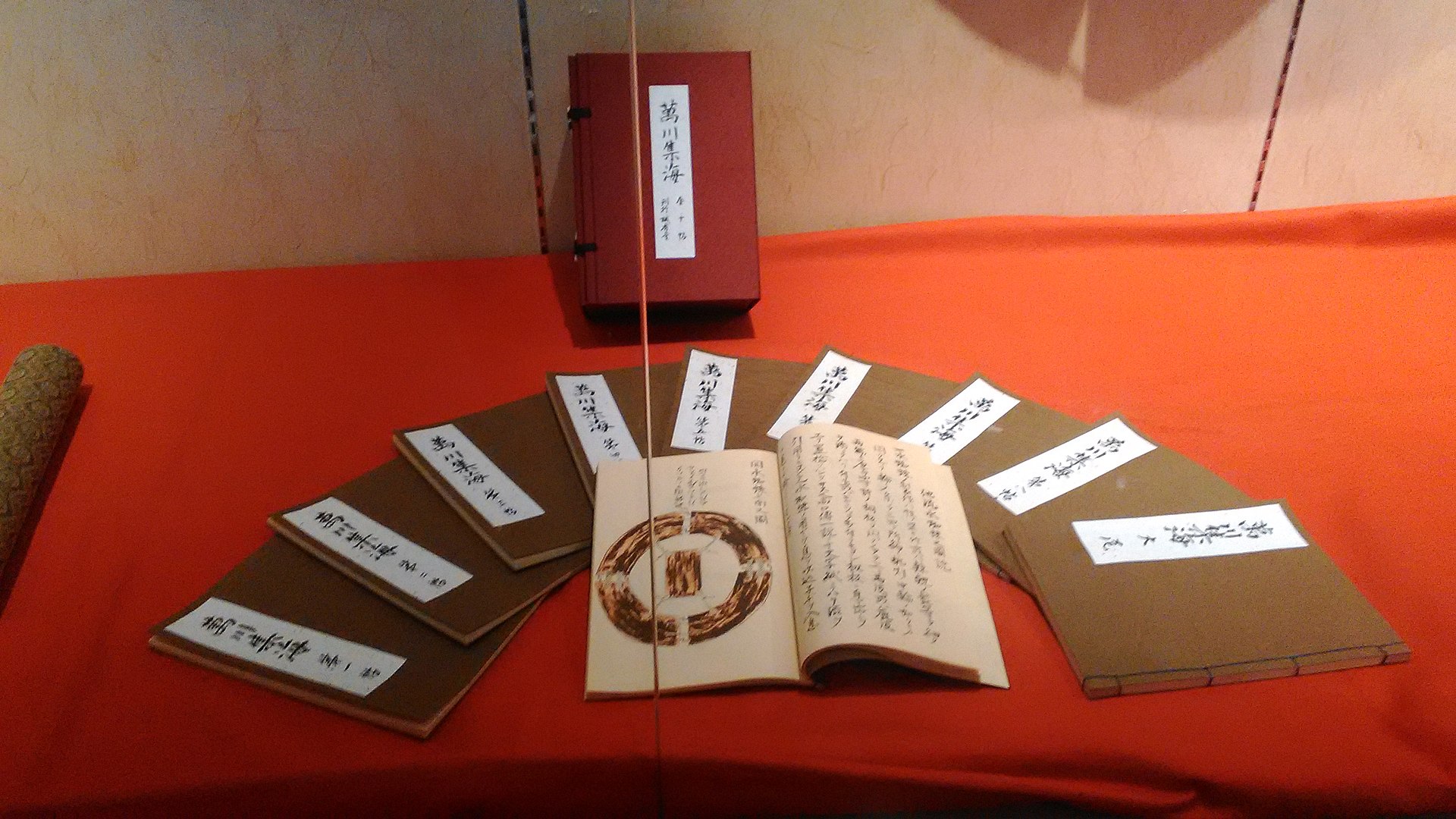 Daily Life of the Ninja
Daily Life of the Ninja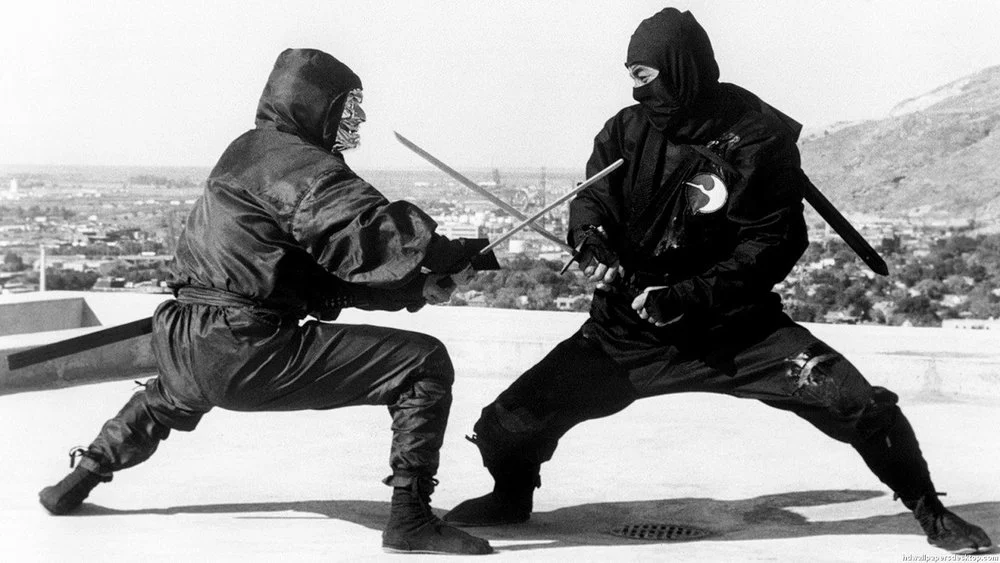
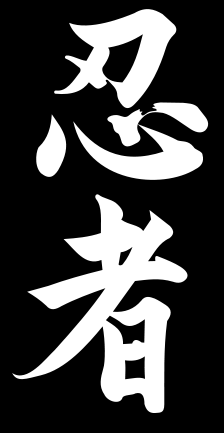 Ninjutsu as an Art of Survival
Ninjutsu as an Art of Survival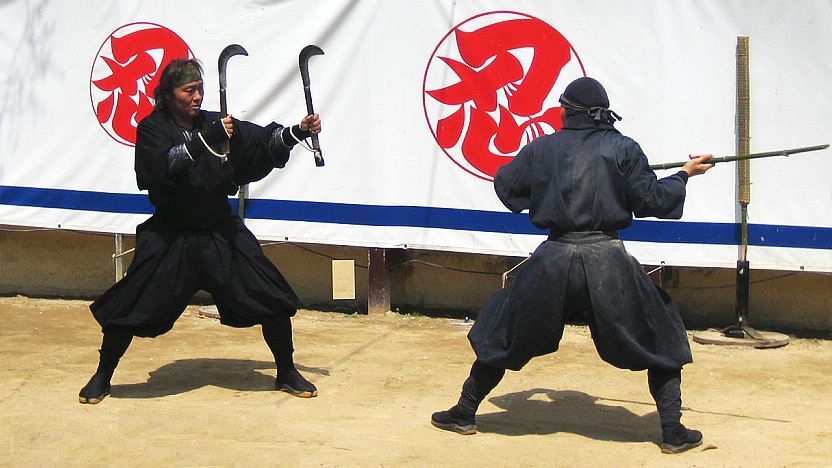 Adaptation and Variability
Adaptation and Variability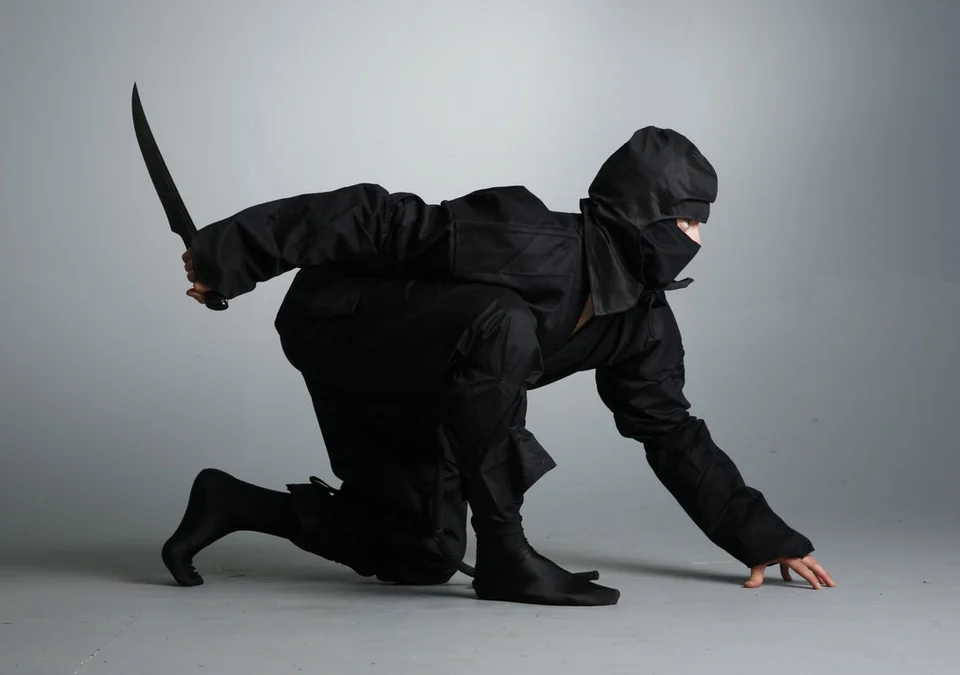 Ninjutsu in a Contemporary Context
Ninjutsu in a Contemporary Context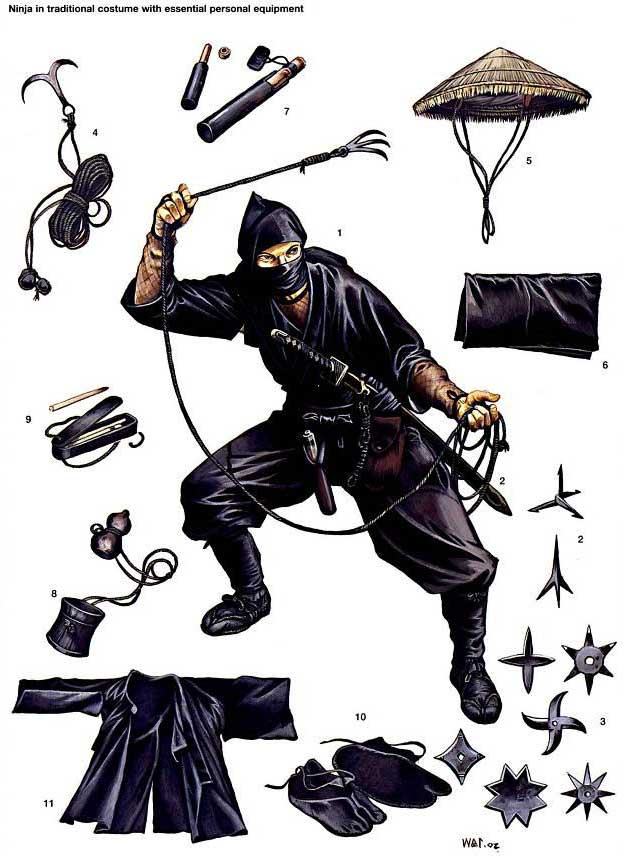 The Philosophy of Ninjutsu: Key Elements
The Philosophy of Ninjutsu: Key Elements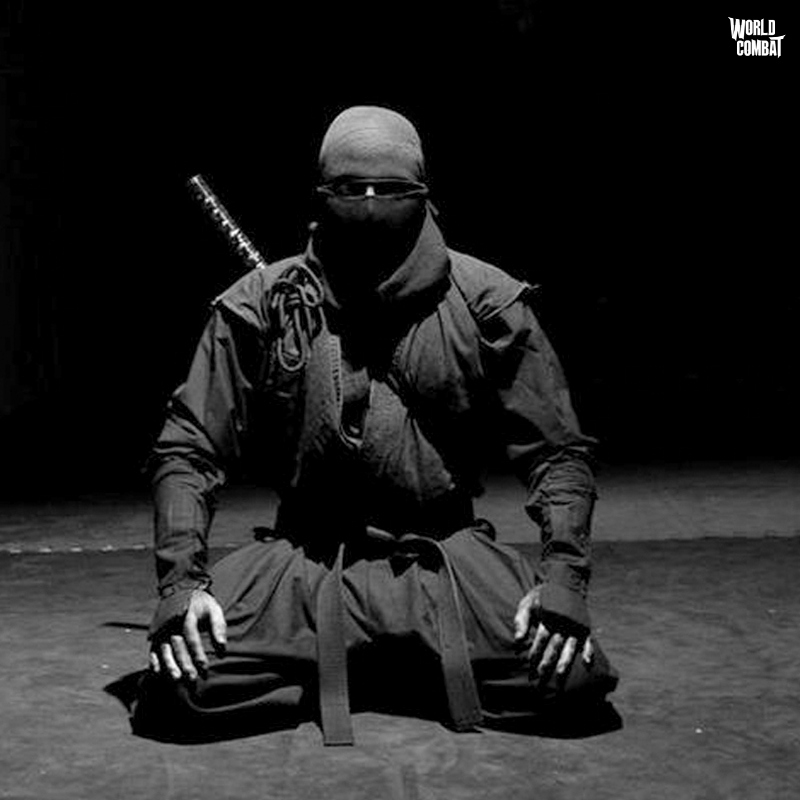 Inner Discipline and Mind Control
Inner Discipline and Mind Control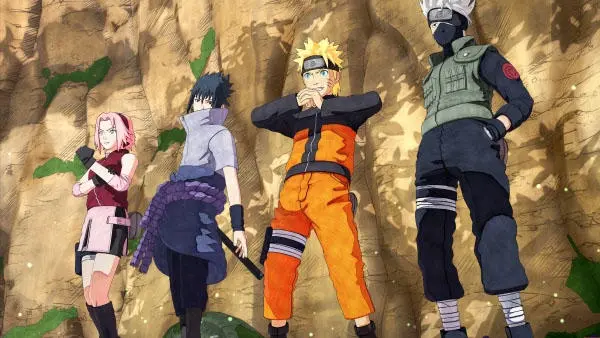 "Naruto" – A Fantastic Representation of Ninja
"Naruto" – A Fantastic Representation of Ninja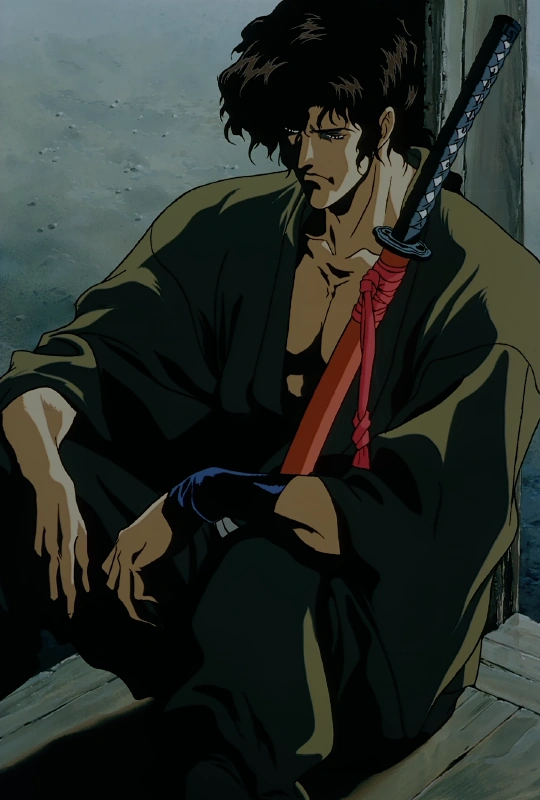 "Ninja Scroll" – Ninja in the Art of Animation
"Ninja Scroll" – Ninja in the Art of Animation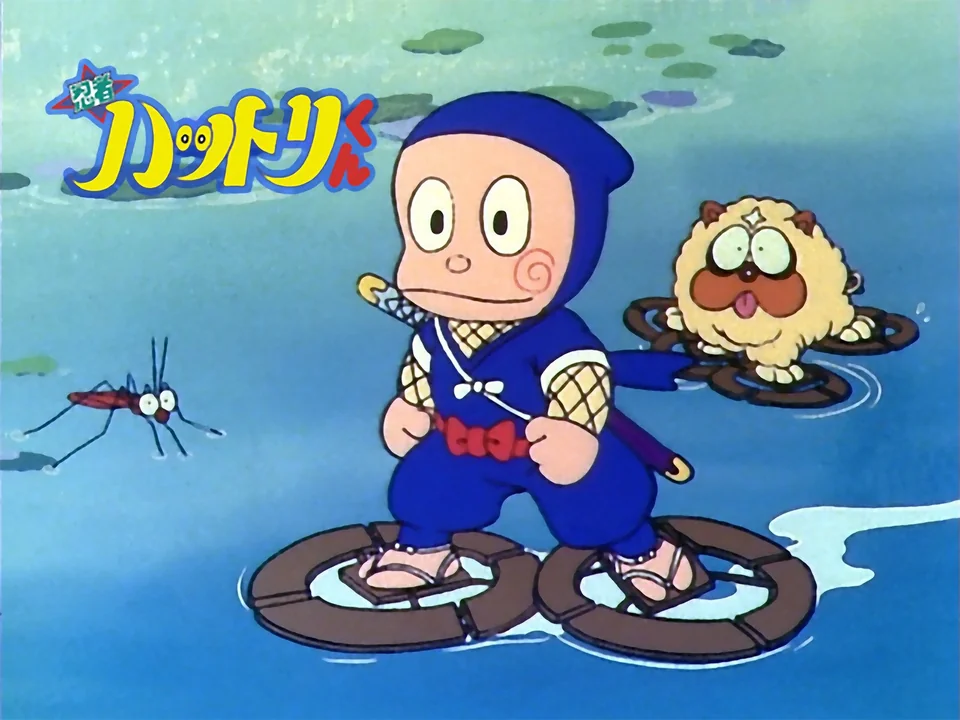 "Ninja Hattori-kun" – Ninja in Children's Anime
"Ninja Hattori-kun" – Ninja in Children's Anime
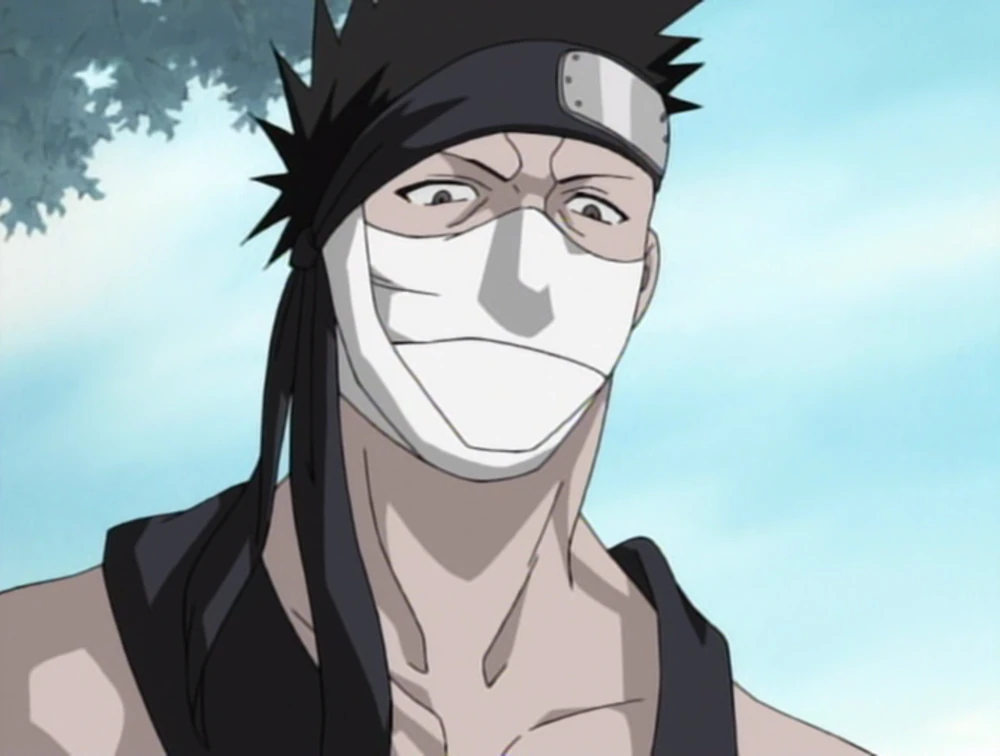 Fantasy in Anime
Fantasy in Anime Historical Reality of Ninja
Historical Reality of Ninja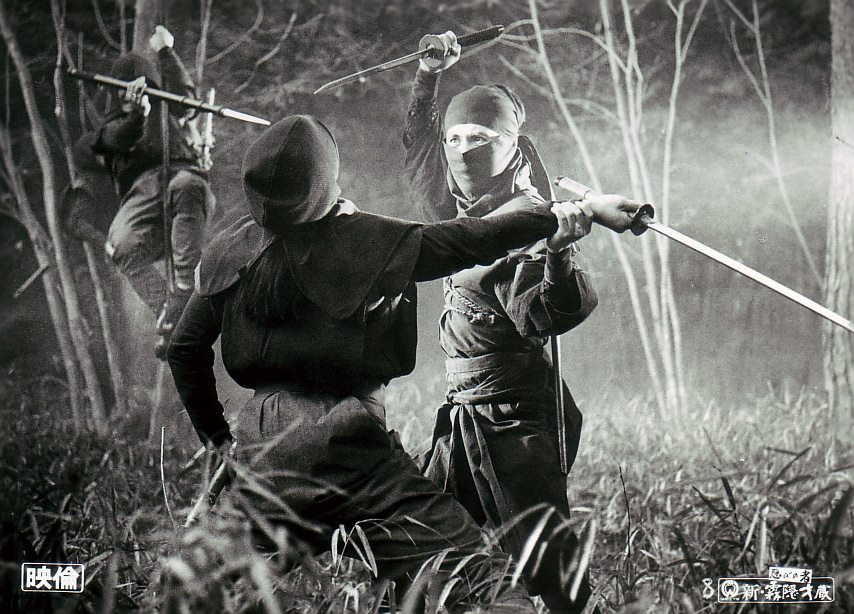 Shinobi no Mono
Shinobi no Mono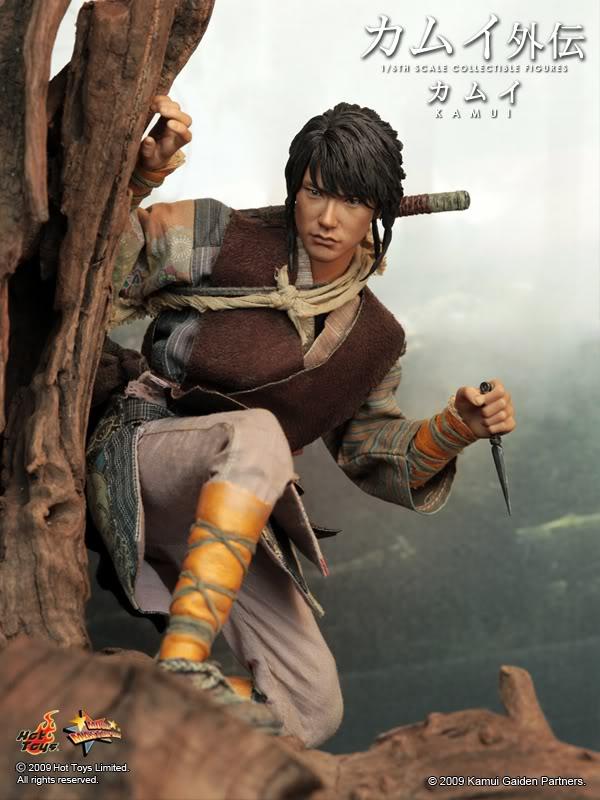 Kamui Gaiden
Kamui Gaiden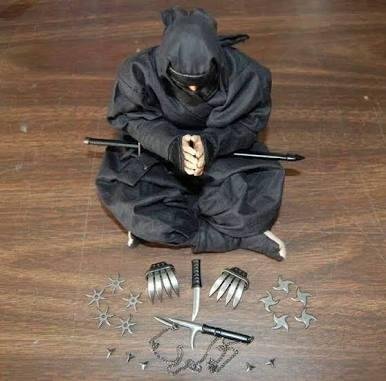 Discovering Ninjas: Beyond Anime Screens
Discovering Ninjas: Beyond Anime Screens

